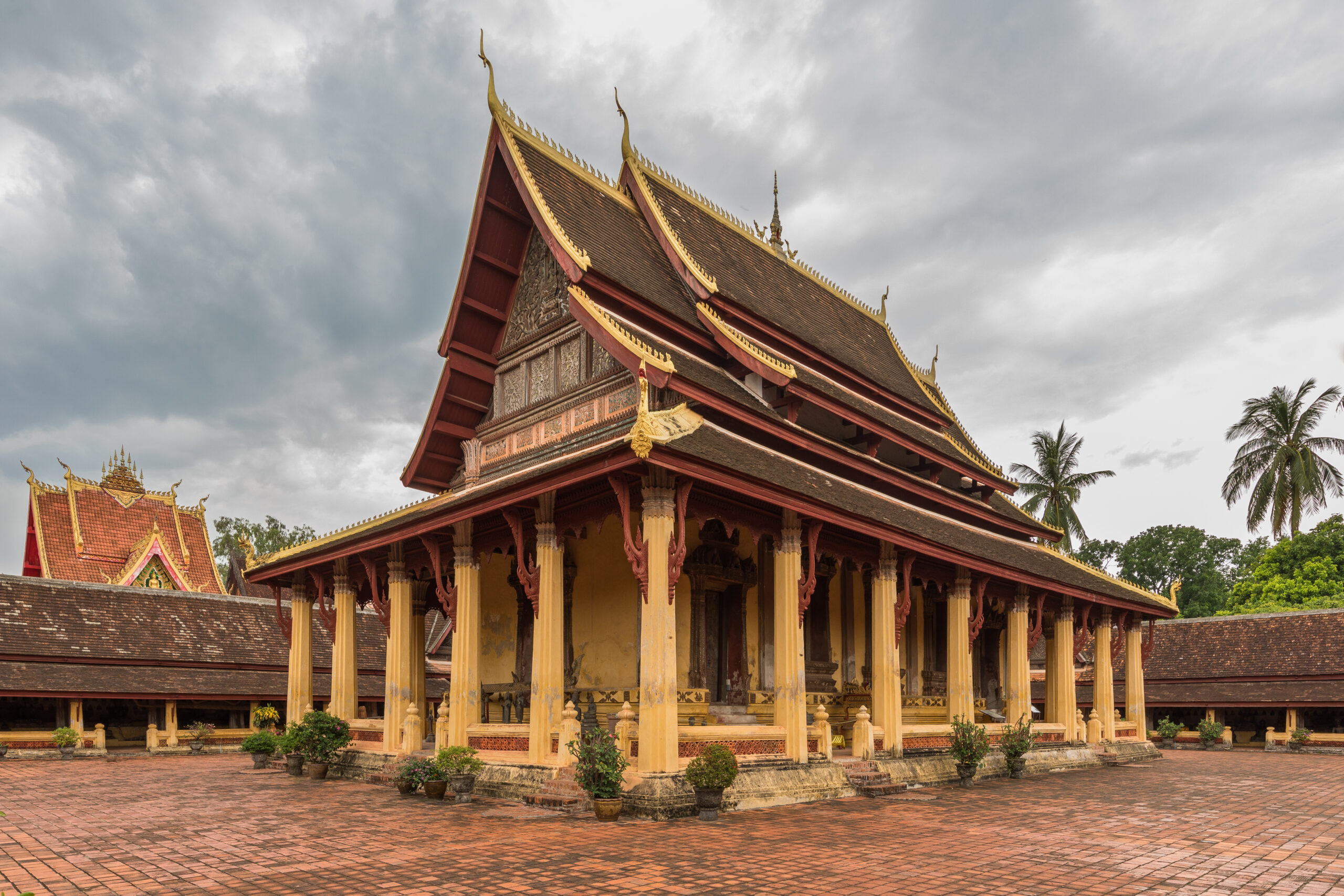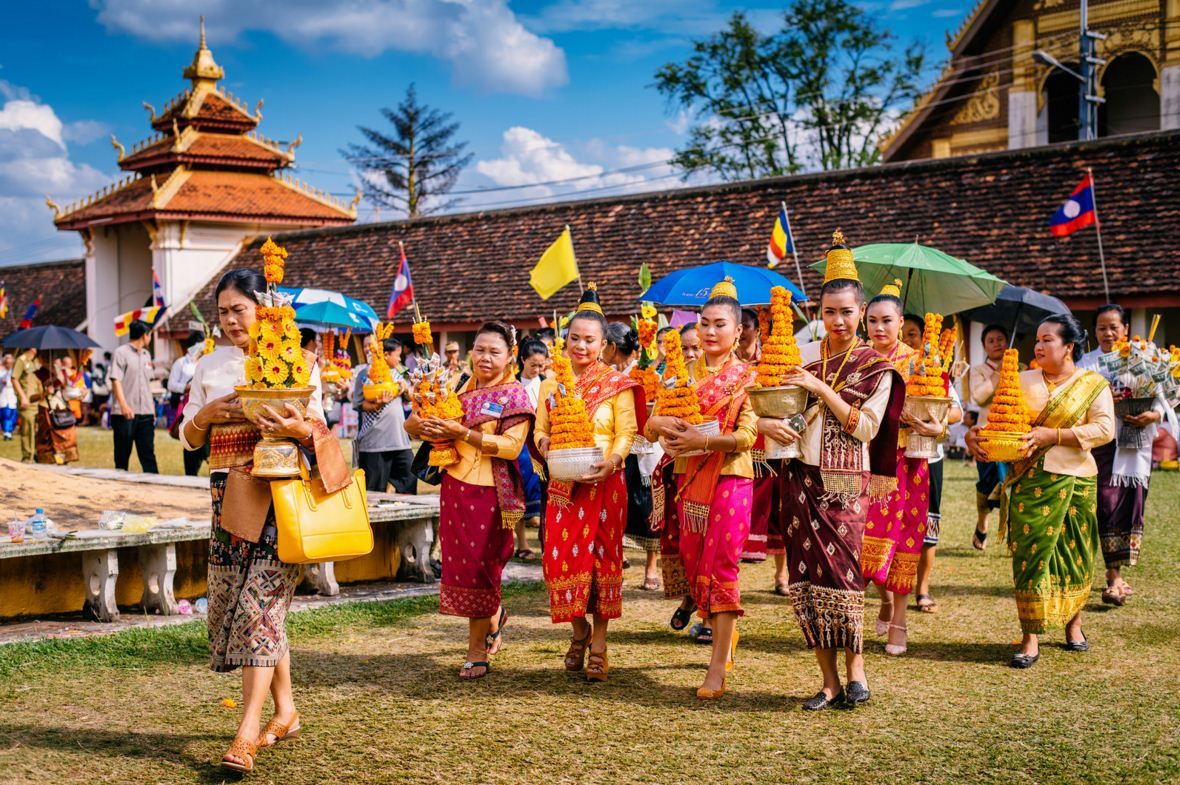1. Overview
The National Library of Laos, established in 1956, is an essential institution in Vientiane dedicated to preserving and promoting Laos’ literary and cultural heritage. Originally housed in a former French colonial building, the library plays a pivotal role in collecting and safeguarding the nation’s historical documents, books, and manuscripts. It also serves as a center for literacy promotion and educational outreach.
Name: National Library of Laos
Location: Samsenthai Road, Vientiane, Laos
Coordinates: 17.9750° N, 102.6330° E
Best visited: While exploring Vientiane’s cultural and educational landmarks or seeking to learn more about Lao history and literature.
2. History of the Place
The National Library of Laos has a rich history and significant role in the preservation of the nation’s cultural legacy:
- Establishment: Founded in 1956 to collect and preserve Laos’ literary heritage.
- Original Building: Initially housed in the French colonial-style building on the banks of the Mekong River.
- Renaming: Became independent from the Ministry of Information in 1988.
- Manuscript Preservation: In 1989, it began the Lao Ancient Manuscript Preservation Project to safeguard cultural texts.
- Digitalization Efforts: In 2007, began collaborating with the University of Passau and Berlin State Library to digitize ancient manuscripts.
- New Building: In 2017, the library moved to a new four-story building in Xaythany District.
- Collection: Houses over 300,000 books, 6,000 palm-leaf manuscripts, and 800 audio/visual materials.
- Reading Centers: Operates 9 reading centers and 44 reading rooms across Laos.
- National ISBN Center: Serves as the ISBN center for Laos, promoting book publication.
- Public Engagement: Offers mobile library services and engages in national literacy campaigns.
3. Location
4. What Makes “National Library of Laos” Popular?
The National Library of Laos is popular for its vast collections and educational contributions:
- Cultural and Literary Significance: Offers a window into Laos’ literary and cultural history.
- Historical Documents: Features ancient manuscripts, books, and religious texts central to Lao heritage.
- Educational Resource: Acts as a vital resource for students, researchers, and the general public.
5. Overall Ratings (1 to 5 Stars)
The National Library of Laos is highly regarded for its cultural importance and its contribution to literacy:
Overall Rating: ⭐⭐⭐⭐⭐ (5/5)
Cultural Significance: ⭐⭐⭐⭐⭐ (5/5)
Authenticity: ⭐⭐⭐⭐⭐ (5/5)
Atmosphere & Environment: ⭐⭐⭐⭐☆ (4/5)
Accessibility: ⭐⭐⭐⭐⭐ (5/5)
Tourist Friendliness: ⭐⭐⭐⭐☆ (4/5)
6. Weather
Vientiane experiences a tropical climate with distinct wet and dry seasons:
Best Time to Visit: November to February (cooler, dry season)
Temperature Range: 25–35°C (77–95°F)
Wet Season: May to October
Rain Gear: Recommended during the wet season.
7. Nearest Five Hotels
For visitors seeking accommodation near the National Library of Laos, here are five options:
- Sabaidee@Lao Hotel: Comfortable and centrally located with easy access to major attractions.
- Vientiane Plaza Hotel: Offers modern amenities and is a short walk from the library.
- Green Park Boutique Hotel: A blend of traditional and contemporary styles, perfect for a peaceful stay.
- City Inn Vientiane: A budget-friendly option with easy access to the library.
- Ibis Vientiane Nam Phu: Centrally located with essential amenities for travelers.
8. Timings
The National Library of Laos operates during standard hours:
Opening Hours: 8:00 AM – 4:00 PM daily
Best Time to Visit: Early morning or late afternoon to avoid crowds and enjoy a more relaxed experience.
9. Time Required to Visit
A visit to the National Library of Laos typically requires a moderate amount of time:
Visit Duration: 1–2 hours
Ideal for: History enthusiasts, literature lovers, and cultural explorers.
10. Entry Fees & Ticket Booking Details
There is no entry fee to visit the National Library of Laos:
Entry Fee: Free
Booking: Not required for general visits.
11. Things to See & Do
Visitors can explore the library’s vast collection of books, manuscripts, and exhibits:
- Explore: The library’s exhibitions showcasing Laos’ literary heritage.
- Learn: About the preservation of ancient Lao manuscripts and the country’s history.
- Photography: Capture the stunning architecture and peaceful environment of the library.
12. Best Time to Visit
The best time to visit is during the dry season when the weather is more comfortable:
Best Time: November to February (cooler, dry season)
Time of Day: Early morning or late afternoon for fewer crowds.
13. Nearest Parking Spots
Street parking is available near the National Library of Laos, and there are public parking spaces nearby:
Street Parking: Available near the library.
Public Parking: Located near other major attractions in Vientiane.
Alternative: Tuk-tuks and bicycles are convenient for getting around the area.
14. Tips for Visitors
- Dress Modestly: As a cultural institution, it’s important to dress respectfully.
- Take Your Time: Allow enough time to explore the exhibits and appreciate the collections.
- Stay Hydrated: Vientiane can get hot, so it’s a good idea to bring water, especially if you’re visiting during the warmer months.
- Photography: Be considerate when taking photos inside the library, especially near exhibits.
15. How to Reach the Place
The National Library of Laos is centrally located in Vientiane and is easily accessible by foot, tuk-tuk, or bicycle:
By Tuk-Tuk: Convenient and affordable for short trips.
By Bicycle: A great way to explore Vientiane at your own pace.
By Foot: Easily accessible from nearby attractions.
Taxi: Available for longer trips.
16. Nearby Attractions to Combine for the Visit
While visiting the National Library of Laos, consider exploring these nearby landmarks:
- Patuxai (Victory Monument): A prominent landmark offering panoramic views of the city.
- That Luang Stupa: The most significant Buddhist monument in Laos.
- Wat Si Saket: The oldest surviving temple in Vientiane.
- COPE Visitor Centre: Learn about the impact of unexploded ordnance in Laos.
- Mekong Riverfront: A scenic area for shopping, dining, and relaxing along the river.


